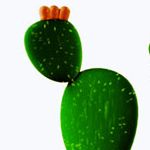- Home
- After Effects
- Discussions
- Re: Video Essay - Optical Printers: compositing be...
- Re: Video Essay - Optical Printers: compositing be...
Video Essay - Optical Printers: compositing before After Effects
Copy link to clipboard
Copied
I thought some of you might be interested in a bit of a mini deep-dive (shallow dive?) I've made into how effects companies like ILM achieved blue screen effects before they could simple add the Keylight effect and click on the background.
A few years ago I stumbled across a beginning explanation of Optical Printers, but I had no idea just how complex and time consuming it was in the days of physical film.
Copy link to clipboard
Copied
Optical printing, hand-painted masks, a motion control camera rig that I built in 1972 that had the ability to put a matte painted-on glass in front of the camera, rewind the film, and then do a double exposure to create what is now sometimes called the Ken Burns Effect, and bi-pack printing for titles. That's how I started, and that experience has helped me really understand the workflows necessary to achieve high-quality cinematic effects and composites in the digital era. I have used Dark Red, Yellow, Blue, and Green backgrounds with the Motion Control rig and on film sets when shooting on film, plus different filters and even ortho-chromatic film to generate mattes. So has Disney. Here's a small BG shot from the original Mary Poppins.
I often use the same kind of workflow or modify the 'screen' color with color correction to get a clean matte that I can use today.
ShiveringCactus, Thanks for the video. Nice job. I am sure it will help others appreciate and even figure out better workflows.
Copy link to clipboard
Copied
Thanks @Rick Gerard , it was fascinating to learn all about this stuff. I'd had no idea when I started looking into it. Was the transition to computers easy for you to adapt to? I'm imagine it was a completely different skillset.
That Mary Poppins shot... I also learned about the sodium light process (decided to make that a separate video), but that was incredible in its own right. Is it true there was only one camera rig capable of filming with it?
Copy link to clipboard
Copied
The prep, layering, and masking modes are all the same. Poke a hole, adjust the boundary to get light wrap using some kind of blur, fiddle with the color, and stack things up. It's all the same idea.
The hardest part when I started working with digital footage was the lack of tools. The ability to preview a movie without rendering it was the biggest challenge we all faced in 1993 when After Effects was released. To make a composite work, you still need multiple layers, different mask modes, and a way to blend colors.
It really harkens back to the very first visual effects when film pioneers like George Méliès and William Friese-Greene explored the possibilities of combining shots with manipulated backdrops, double exposures, breakthrough animation techniques, mechanical devices, and special effects to create fantastic and visually stunning scenes. George's "Trip to the Moon" was produced one hundred and twenty-two years ago using mattes, layers, animated illustrations, and patience. No matter what software you use, it's all still the same process. Start with a background and add layers.
Find more inspiration, events, and resources on the new Adobe Community
Explore Now
